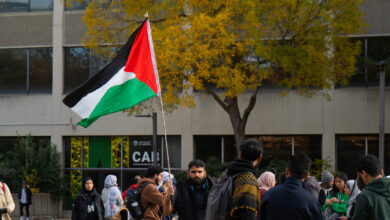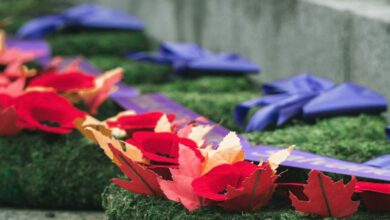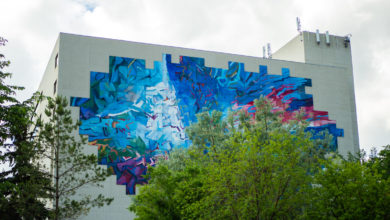Understanding Reconciliation through FOOD!
Connecting Indigenous students to traditional foods on campus is a deep and complex topic underscored by relationships. One such relationship is Reconciliation.
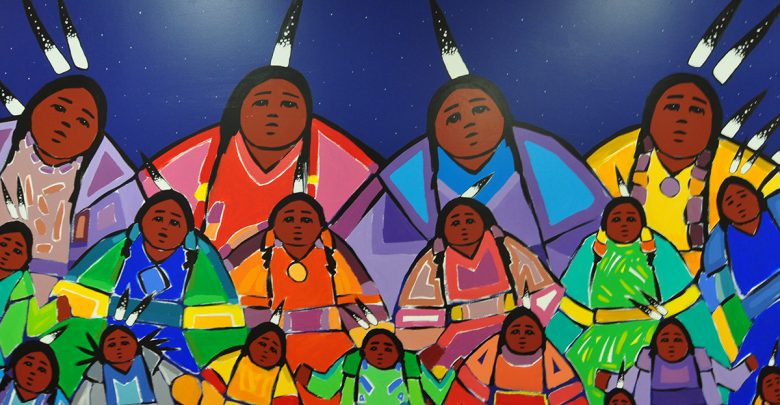 Amy Kim
Amy Kim Canada is in the era of Truth and Reconciliation. Many federal, provincial, and territorial institutions have made commitments to the repair and restoration of Indigenous language, culture, spirituality, and land, recognizing that strengthening these four pillars is a pathway towards healing, according to the United Nations Declaration of Rights of Indigenous Peoples (UNDRIP). Calls 13–17 of the 94 calls to action of the Truth and Reconciliation Committee (TRC) of Canada also specifically focus on language and culture.
I am a Sahtúgot’įnę woman belonging to the Dene Nation of Denedeh in Treaty 11 Territory. I was fortunate to be raised and rooted in culture, land, and language. I am a fluent first language speaker of my language and this connects me completely to the worldview of who I inherently am as a Dene person. It is from this worldview that we share the wisdom of who we are and why it is not only powerful, but imperative, that we tell our own stories and assert our own sovereignty and self-determination — nothing about us, without us.”
It is imperative because Indigenous languages, cultures, heritage, and ways of knowing and being are threatened and in danger in many communities across Canada, which stems deeply from the history of forced colonization and attempted genocide. This is especially pronounced with the disruption of intergenerational knowledge transfer between Indigenous youth and Knowledge Keepers/Elders, according to reports among many First Nations Communities across the country. In this era of Truth and Reconciliation, there is an opportunity for all Canadians — Indigenous and non-indigenous — to participate, a sentiment that is repeatedly echoed throughout the interviews featured in this piece.
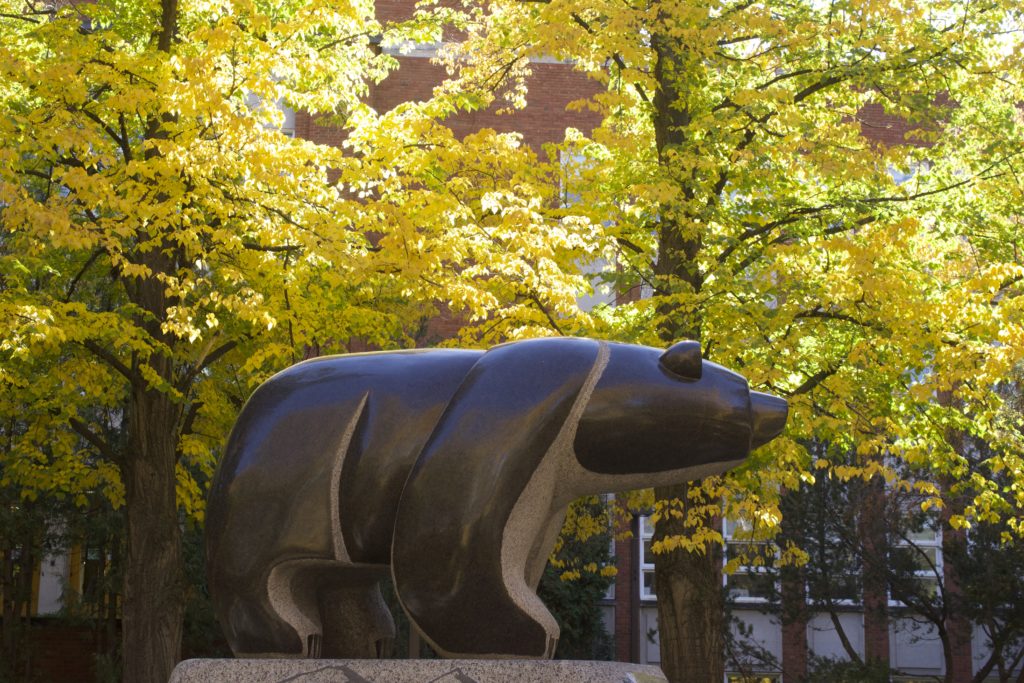
Indigenous Peoples have a strong connection to Land and food systems/sovereignty. The relationship with Land is the foundation of Indigenous food systems, culture, and ways of knowing and being. It is more than hunting and gathering. Beneath subsistence hunting are intricate creation stories, an ecological knowledge of the environment, and a living relationship that thrives. It is this connection and relationship that Reconciliation aims to repair and strengthen.
Not only are these sentiments affirmed in the TRC recommendations and referred to in UNDRIP. They’re also framed as a pathway in the context of Indigenous Protected and Conserved Areas (IPCA) as outlined in The Indigenous Circle of Experts’ Report called, “ We Rise Together.” The IPCA is a movement to protect and conserve the environment, not only for Indigenous peoples, but for all peoples. However, it centers Indigenous knowledge utilizing the wisdom that comes from a millennia of connection and right relationship with the Land, as the report states.
One thing that links all humans together is food. It is the centre of our lives, our homes, our communities, and a representation of our nations. Food is also a basic human right for everyone, including Indigenous Peoples.
Why is this important to students at the U of A?
Food security is an issue that impacts University of Alberta students. According to its 2022–23 report, the Campus Food Bank (CFB) reported that hamper distribution went up by 106 per cent in the previous year. Individuals served went up by 73 per cent in previous year, and food distribution went up by 72 per cent from 2020–21.
But, an often ignored issue is that Indigenous students face a high degree of difficulty when it comes to accessing traditional Indigenous foods in urban centers. Traditional food is a package deal — it comes with stories, skill development, and community building. The U of A is committed to Reconciliation. But, Reconciliation also includes connecting Indigenous students to traditional foods.
Understanding the cultural significance of traditional foods
A particularly appreciated resource according to many Indigenous students on campus is the
Indigenous Knowledge Keeper and Cree Elder-in Residence of the First Peoples’ House (FPH), Dr. Francis Whiskeyjack. He has worked for FPH since 2019 as an Elder, mentor, and advocate for the U of A campus community. He is also a Residential School Survivor, an artist, and a musician.
The FPH’s vision is to demonstrate commitment to the First Nations, Métis, and Inuit student community on campus and provide services that reflect this responsibility. Furthermore, they aim to honour the Indigenous worldview of education as a continuous ceremony.
In an interview with The Gateway, Elder Whiskeyjack spoke of a time before colonization, when living off of the land was a way of life. At this time, the Cree people knew the land, animals, and environment very intimately, and they followed nature’s cycles throughout the year, Elder Whiskeyjack described. He called this awareness “Indian time.”
“When people say Indian time, it’s not about being late. Indian time really means, when things came to be. It’s a time of year when the ducks came in or the geese flew. It’s a time when animals were mating. It’s a time when strawberries first came into being.”
Today, we understand food as a human right and refer to the ability to access food as food security. But, according to Elder Whiskeyjack, the stewards of these lands call traditional food ‘gifts.’ Access to these gifts were considered a blessing from the Creator. As such, these gifts of the Land would often be “utilized in feasts accompanying ceremonies where they were honoured by Elders. Prayers were said to thank the Creator for abundance.”
Elder Whiskeyjack added that the ceremony and feast would almost always go hand-in-hand.
“The Feast was a powerful way in promoting participation, sharing, and gathering community which established connection and relationships.”
Access to traditional Indigenous foods — a universe of dynamic connections
As Elder Whiskeyjack explained, traditional food is part of a big, interconnected web of the mental, spiritual, emotional, and physical elements of being human. Indigenous peoples view traditional foods as a way of life, a way of knowing and being. Traditional foods connect you to the Land because they come from the Land. It’s a great balancing act, but you set the trajectory with the intention of doing all things in a good way. The intentions are guided by the values learned and informed by the Land itself. This is why traditional foods are important to Indigenous students on campus — it connects them to who they inherently are.
“When you know real Native Culture, it’s not that dark history of addictions, but really knowing your history. The connection is to be proud of who you are because we do have a rich culture, and we still have it, if we follow it,” Elder Whiskeyjack said.
“It’s a way of life. It’s a way of life. I repeat that and if you know yourself, if you know your history, then there’s no need to have any shame. It puts a person’s mind at ease. Puts that spirit at ease.”
Creating a culturally safe space for Indigenous students on campus
Among the many voices represented in student councils and organizations on campus, Sophie Martel, president of the Indigenous Students’ Union (ISU), specifically represents the voices of Indigenous students.
Martel is Cree from Onion Lake in Treaty 6 Territory. The ISU is the grassroots voice of Indigenous students on campus. Their goal is to create a safe and inclusive space for self-identified Indigenous students to re-affirm and foster balance in spiritual, mental, physical, and emotional health through the promotion of cultural, political, academic, athletic, and interpersonal interests.
Martel said that Indigenous students come to her with three main areas of advocacy: helping students feel seen and heard, helping access nutritious and affordable food, and support for safety on campus.
“What students are really wanting [is] more ceremony, more feasts, and more traditional medicine on campus,” Martel said.
“So, we’re trying to find different and better ways to be able to bring land, culture, and community back to campus.”
Martel thinks Indigenizing space and making more traditional foods accessible on campus would help Indigenous students “feel more at home … feel more represented, and help build morale on campus.”
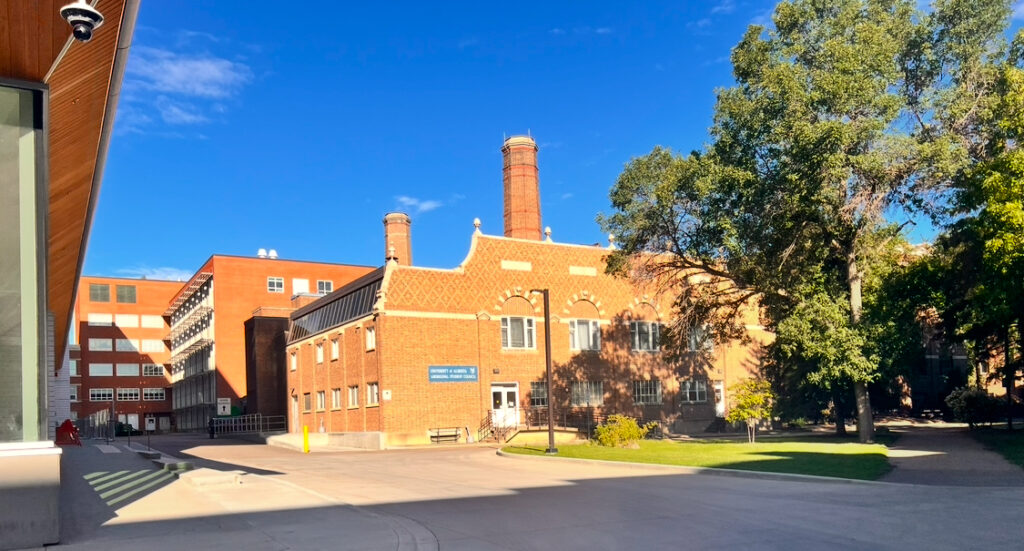
Supporting Indigenous students in connecting to culture, language, and spirituality is a commitment the U of A has made. In fact, the U of A’s General Faculties Council (GFC) and the Board of Governors (BoG) unanimously endorsed the U of A’s Indigenous Strategic Plan called Braiding Past, Present and Future, in June 2022.
This strategic plan heavily references the TRC, as well as UNDRIP. It also credits “wide ranging dialogues, gathering information, and listening to community so as to envision the goals, themes, and strategies of the plan.”
However, according to Martel, there still needs to be a lot of trust building between the university and Indigenous students. As for the plan itself, she feels that the U of A is behind on its projected timelines, but “having traditional foods on campus will begin to build that trust.”
Indigenizing space, the big Rs: Revitalization, Reparation, Resurgence, and Reconciliation
Faye Findlay, an assistant lecturer at the U of A, is Métis from Treaty 6 Territory. Findlay teaches three Native Studies courses that focus on the history of Indigenous peoples in Canada and contemporary Indigenous art.
Sometimes we forget about our collective history and just how complex it is. Two parallel histories emerge when connecting Indigenous students to traditional foods on campus: Indigenous people’s history before colonization and Indigenous people’s history in Canada. It’s necessary to remember that these are two very different perspectives.
Findlay reiterated the sentiments of Elder Whiskeyjack in stating that “Land is Indigenous Lifeways. It is knowledge, it’s their language, it’s their stories. Everything comes from the Land, and everything goes back to the Land. There’s no separation between [Indigenous] people and the Land.”
The colonization of Indigenous peoples disrupted Indigenous ways of life. This history is covered in the U of A’s Native Studies courses on Indigenous history in Canada.
“When we think of colonialism, we think of land theft,” Findlay said. “The universities are very much part of that. But until it’s being recognized and then movement towards those reparations [begins], then that’s when we can start talking about Reconciliation.”
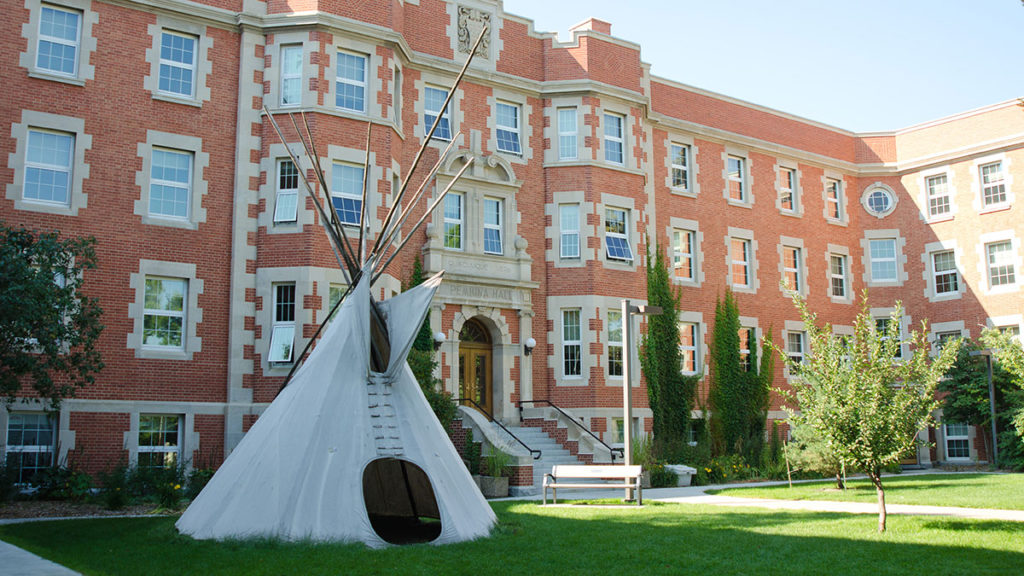
Findlay has witnessed this work towards decolonizing space in British Columbia (B.C.), where she lived previously before moving back to Alberta. Currently, the land on which the Royal Roads University in Victoria, B.C. resides on is in the process of being repatriated back to the Indigenous peoples whose traditional territories they belong to, the Songhees and Esquimalt First Nations, through modern Treaty negotiations.
”Other institutions across this country need to be doing similar kinds of work — not only calls to action, but go beyond those calls to action. We think about reparations that need to take place. So not only Land Acknowledgements, but recognizing Land as being integral to Indigenous Lifeways and the reclaiming of spaces and traditions.”
For now, according to Findlay, efforts in smaller ways like establishing Indigenous Community Gardens on campus can help move the U of A towards decolonizing space. Doing so can support the revitalization and resurgence of Indigenous Lifeways. The Indigenous Health Research and Education Garden (IHREG) located at the University of British Columbia (UBC), which resides on the traditional lands of the Musqueam, focuses on Indigenous food sovereignty, food security, and traditional plant knowledge.
Connecting Indigenous students to traditional foods benefits everyone on campus
Food brings us together where connections and relationships are established. It is the foundation on which communities are built. Reconciliation is also about building new relationships through reparations and trust.
“A lot of decolonization at the institutional level [is required] so that we can feel safe and welcome here, and be able to have the capacity to learn properly,” Martel said.
Reconciliation is about collectively co-creating space for learning and understanding for all. As Elder Whiskeyjack mentioned, Indigenous culture is rich. It contains a wealth of knowledge as big as the universe. It is a worldview that sees the bigger picture and understands how all things are interconnected and where us human beings belong within creation. This is the rightful inheritance of Indigenous students on campus. As we work to support strengthening the pathways to their own inheritance, there is a place for non-indigenous students to also learn and participate in meaningful ways, but it is still a delicate journey.
“When it comes to educating, we need to remember that we’re not here to educate. We’re here to share and support in educational journeys and that it is important to learn about your fellow Indigenous students. But [don’t] expect Indigenous students to be the ones that need to teach you,” Martel explained.
This will indeed require humility on all our parts and a willingness to share.
“This is a lifetime journey for me,” Elder Whiskeyjack shared. “It’s like the psychology of ceremony. It’s how we balance everything and how we try to understand it and in a good sense.”
As for the U of A, it has much to benefit from decolonizing space. For instance, an Indigenous Community Garden on Campus can inform across multiple disciplines with the help of the holistic worldview of the Indigenous stewards of these Lands. It can nurture the reciprocal relationship of healing the Land while healing and nourishing ourselves, Indigenous and non-indigenous alike. Together, building a community that feels like home and family for all on our campus.
CORRECTION: A correction was issued on July 2, 2025 at 11:00 a.m. to correct that Onion Lake Cree Nation is on Treaty 6 Territory, not Treaty 7 Territory. The Gateway regrets this error.

